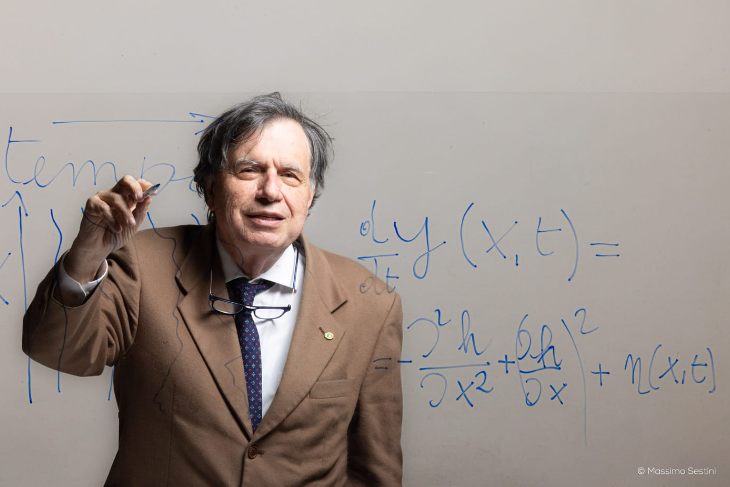STATPHYS29: The World Conference on Statistical Physics Comes to Florence

Originally launched in Florence in 1949, STATPHYS has become a major triennial meeting for the global scientific community. Today, statistical physics is a truly interdisciplinary science, encompassing fields such as theoretical biology, complex materials, neuroscience, artificial intelligence, and climate change. “Statistical physics was born to study the complex behaviors of matter, but today it has a much broader impact,” says Prof. Roberto Livi, president of the Italian Society of Statistical Physics and co-chair of the conference. He adds: “This is also refiected in the 2024 Nobel Prize awarded to John Hopfield for the neural network model that underpins artificial intelligence.”
The steering committee is chaired by Prof. Stefano Ruffo, former Director of SISSA in Trieste, and the conference has received support from the Italian Ministry of University and Research (MUR), the University of Florence, and several other research institutions and universities. The scientific sessions will be held at the Palazzo dei Congressi and Palazzo degli Affari in Florence; the organizational and logistical secretariat is managed by Triumph.
Giorgio Parisi’s Opening Address and the Award Ceremonies
The conference will open on July 13th with a lectio magistralis by Nobel Laureate Giorgio Parisi in the iconic Salone dei Cinquecento at Palazzo Vecchio. On the importance of the event, he comments: “Statistical physics lies at the heart of extraordinary discoveries: from materials science to the study of complexity in living systems. This conference is a chance for us to come together and take stock of the current state of research.” The opening event will also include the awarding of students and teachers from Tuscan schools involved in science outreach projects, as well as the Paladin Prize awarded by the Italian Society of Statistical Physics (SIFS). On July 16th, the prestigious Boltzmann Medal will be awarded to Mehran Kardar for introducing a key equation describing the dynamics of interface growth, and to Yoshiki Kuramoto for his foundational contributions to the understanding of collective synchronization phenomena.
This will be followed by the IUPAP Young Scientist Prize ceremony, awarded to Daniel M. Busiello for his work on non-equilibrium chemical reactions, Lorenzo Caprini for research in non-equilibrium statistical mechanics and stochastic processes, and Nicole Yunger Halpern for advancing the integration of statistical physics and thermodynamics into quantum information science.
Public Events and Human Rights
The program also includes free events open to the general public. Notably, the conference “Enrico Fermi and the Development of Statistical Mechanics in Italy” will be held at the Biblioteca delle Oblate on July 10th and 11th, featuring a public lecture by renowned science historian Juergen Renn titled “The Challenge of the Anthropocene”.
On Tuesday, July 15th at 9 PM, the Institut Français in Piazza Ognissanti will host “Points of No Return: Our Climate Gamble”, a public event on statistical mechanics and climate science, organized by the Florence-based Caffè Scienza association, with speakers Freddy Bouchet (ENS–Paris) and Valerio Lucarini (University of Leicester).
As in past editions, STATPHYS continues to emphasize human rights, a longstanding concern of the statistical physics community. One session of the scientific program will be dedicated to the migration of scientists, featuring talks by Prof. Ester Gallo (University of Trento, sociologist) and Prof. Patrizia Guarnieri (University of Florence, historian).
A Tool for Understanding the World
The many applications of statistical mechanics will also be the focus of a dedicated session on industry collaboration. Two researchers from Sony Computer Science Laboratories and Capital Fund Management will share insights on how statistical physics is driving innovation in fields as diverse as music, art, and finance.
Born from the study of complex systems, statistical physics is essential for understanding randomness, non-equilibrium processes, and soft matter. It has laid the theoretical foundations of machine learning and artificial intelligence, and has become a cornerstone of modern science.
In biology, for example, Francesca Di Patti (University of Florence – INFN) explains: “Living systems sit at the interface between order and disorder, and require advanced tools like statistical physics to be understood.” In the field of neuroscience, Simona Olmi (CNR) adds: “Statistical physics helps us explore the brain, from individual neurons to cognitive processes”.
In an era where boundaries between disciplines — physical, biological, and digital — are increasingly blurred, statistical physics affirms its role as an interdisciplinary and pioneering science, a crucial tool for understanding the complexity of the world around us.
Contatti per la stampa:
Giacomo Destro – giadestro@gmail.com
Simone Kodermaz – simkode@gmail.com
Organizzatori:
Stefano Ruffo – ruffo@sissa.it
Roberto Livi – roberto.livi@unifi.it
Picture credits: Massimo Sestini